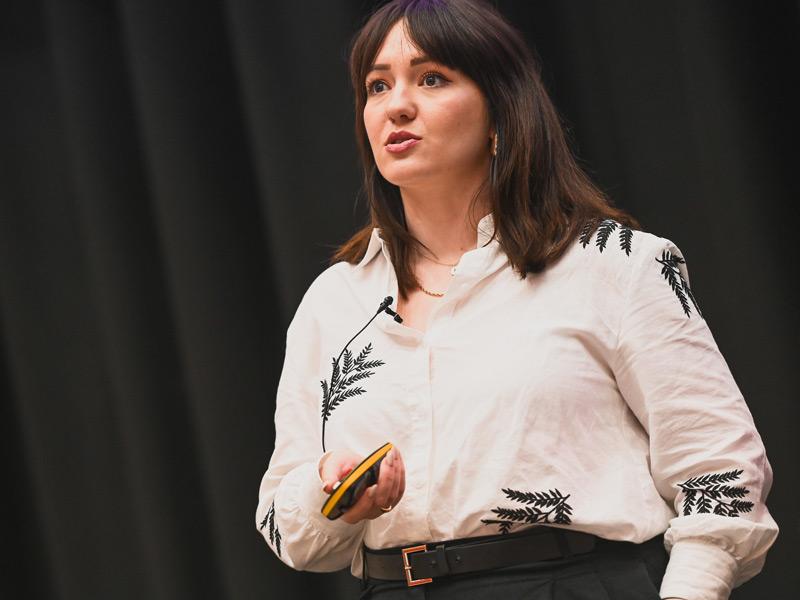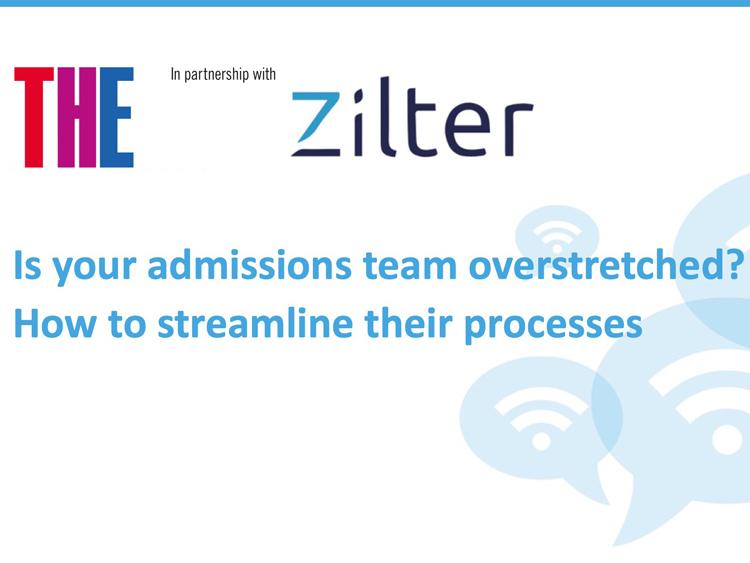
Using chemistry to connect with prospective students online

By designing virtual experiences that are mindful of the impact of brain chemicals on users, universities can see great improvements in their engagement levels. A session held in partnership with Vepple by Revolution Viewing at the 2024 THE HashtagHigherEd UK event explored the power of three brain chemicals in engaging with prospective students.
Vepple is a personalised virtual experience platform by Revolution Viewing. Its always-on virtual experiences are personalised for each user. This means universities can ensure that they only share relevant information with each prospective student in an easily navigable, interactive space.
“Good stories and experiences invoke chemicals in your brain called neurotransmitters,” said Victoria Littler, chief commercial officer at Revolution Viewing. Littler spoke about “the happy hormones”, which are oxytocin, dopamine and endorphins. When people feel the “love hormone”, oxytocin, they experience an emotional connection with a storyteller, she said. The reward hormone, dopamine, is produced when a person experiences something positive, exciting or intriguing. Endorphins, the feel-good hormone, “create positive feelings and fondness”, Littler explained.
Very few universities market themselves in ways that elicit these game-changing reactions, explained Jonny Harper, chief technical officer at Revolution Viewing. Vepple helps universities create guided campus tours with such chemical responses in consideration.
The speakers demonstrated a guided tour, which featured a 360-degree view of a student’s accommodation along with a map of nearby restaurants and cafes. These were presented with textual information about the facilities and the space. “Research we’ve done still says that text-based information is key. We’ve got content within the scene that students can interact with,” Harper said.
The tour also featured a day-in-the-life video by a student. “Combining social media integration with videos allows the student voice to come through,” said Harper. “These experiences have been designed to invoke the oxytocin response. The building and getting a warm response towards [the student in the video], that’s the dopamine response.” Allowing a student to bring out their personality and showcase some humour will produce an endorphin release in the viewer, he added.
The impact of storytelling across the platform was illustrated using the University of Salford’s work with Vepple. “Salford had loads of great content, but they didn’t really have much context that brought it all together into any kind of narrative,” Harper said. Vepple repurposed the university’s existing content to introduce personalised, day-in-the-life guided tours for 30 subject areas, using AI to help build the tours.
By adding map locations, accommodation and social space tours, the average engagement time increased by 44 per cent and page views increased by 111 per cent, said Harper. In benchmarking, the university went from 18th to fifth in Vepple’s engagement chart. “The idea of embracing storytelling and using that to drive engagement has really worked,” he said.
With fewer students than ever attending in-person open days, a positive virtual experience could influence a student to travel to a university, Harper said. “We know that if we can get them to the campus, you’ve got a much higher chance of converting them,” he added.
The speakers:
- Jonny Harper, chief technical officer, Revolution Viewing
- Victoria Littler, chief commercial officer, Revolution Viewing
Find out more about Vepple.

